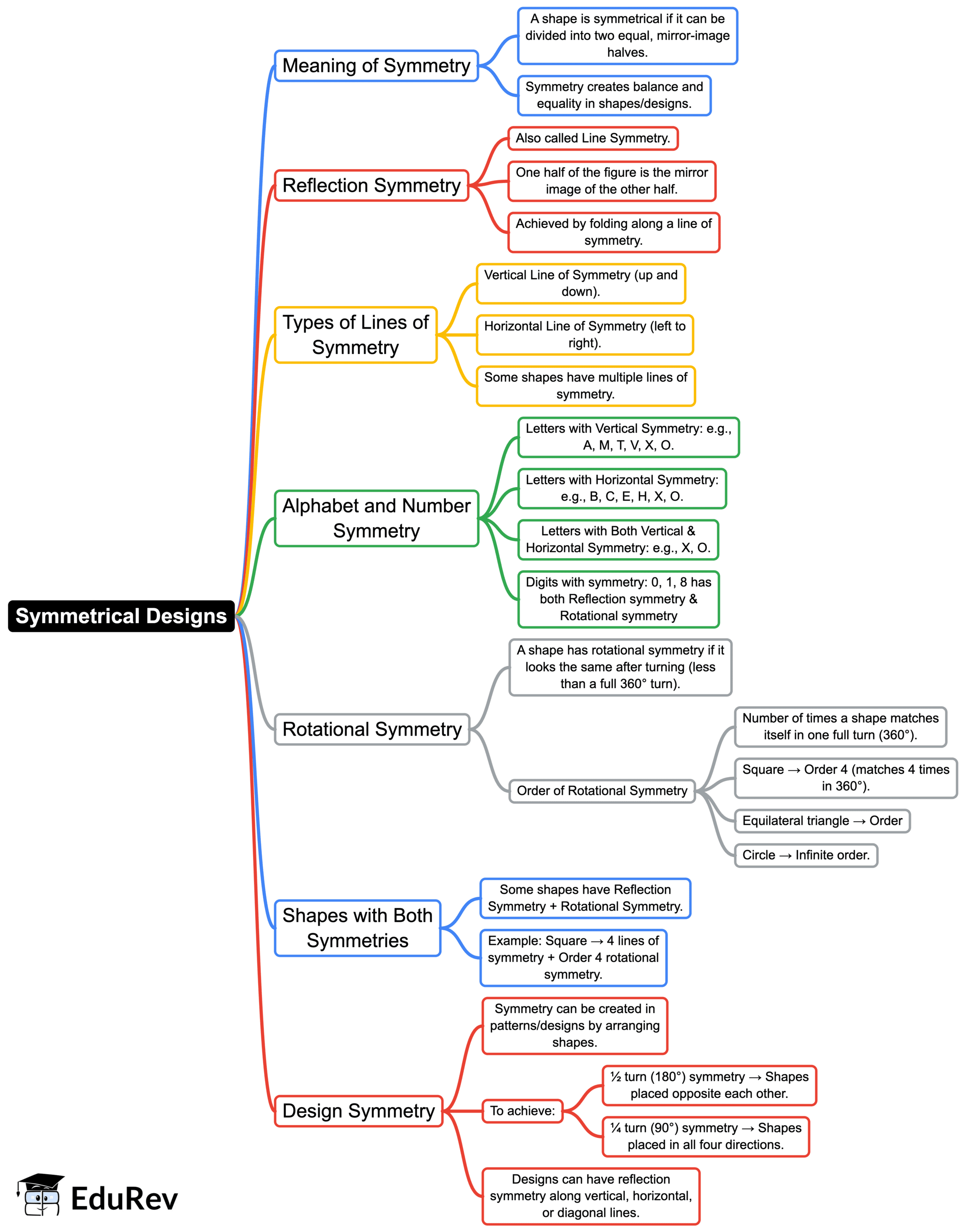Class 5 Exam > Class 5 Notes > Mathematics (Maths Mela) Class 5 - New NCERT > Mind Map: Symmetrical Designs
Mind Map: Symmetrical Designs | Mathematics (Maths Mela) Class 5 - New NCERT PDF Download

The document Mind Map: Symmetrical Designs | Mathematics (Maths Mela) Class 5 - New NCERT is a part of the Class 5 Course Mathematics (Maths Mela) Class 5 - New NCERT.
All you need of Class 5 at this link: Class 5
|
35 videos|276 docs|7 tests
|
FAQs on Mind Map: Symmetrical Designs - Mathematics (Maths Mela) Class 5 - New NCERT
| 1. What is symmetrical design? |  |
Ans. Symmetrical design refers to a balanced and harmonious arrangement of elements on either side of a central line or point. In symmetrical designs, shapes, colors, and patterns are mirrored or repeated, creating a sense of equilibrium. This type of design is often found in art, architecture, and nature, and is pleasing to the eye due to its orderliness.
| 2. Why is symmetry important in art and design? |  |
Ans. Symmetry is important in art and design because it creates visual harmony and balance, making compositions more aesthetically appealing. It can also convey stability and formality, enhancing the overall message of the artwork or design. In addition, symmetrical designs are often easier for viewers to process and understand, which can make them more effective in communication.
| 3. What are some common examples of symmetrical designs in nature? |  |
Ans. Common examples of symmetrical designs in nature include the human face, butterfly wings, flower petals, and leaf arrangements. These natural forms often exhibit bilateral symmetry, where one side mirrors the other, contributing to the beauty and functionality of living organisms.
| 4. How can I create a symmetrical design in my projects? |  |
Ans. To create a symmetrical design in your projects, start by identifying a central axis or point. Then, arrange your elements in a way that mirrors each side of this axis. You can use shapes, colors, and patterns that reflect across the central line. Utilizing design software can also help you achieve precise symmetry by allowing you to duplicate and align elements accurately.
| 5. What is the difference between symmetrical and asymmetrical design? |  |
Ans. The main difference between symmetrical and asymmetrical design lies in balance. Symmetrical design features elements that are evenly distributed and mirrored around a central axis, resulting in a cohesive look. In contrast, asymmetrical design balances different elements of varying sizes, colors, and shapes without mirroring them. This creates a more dynamic and visually interesting composition, appealing to different aesthetics.
Related Searches















